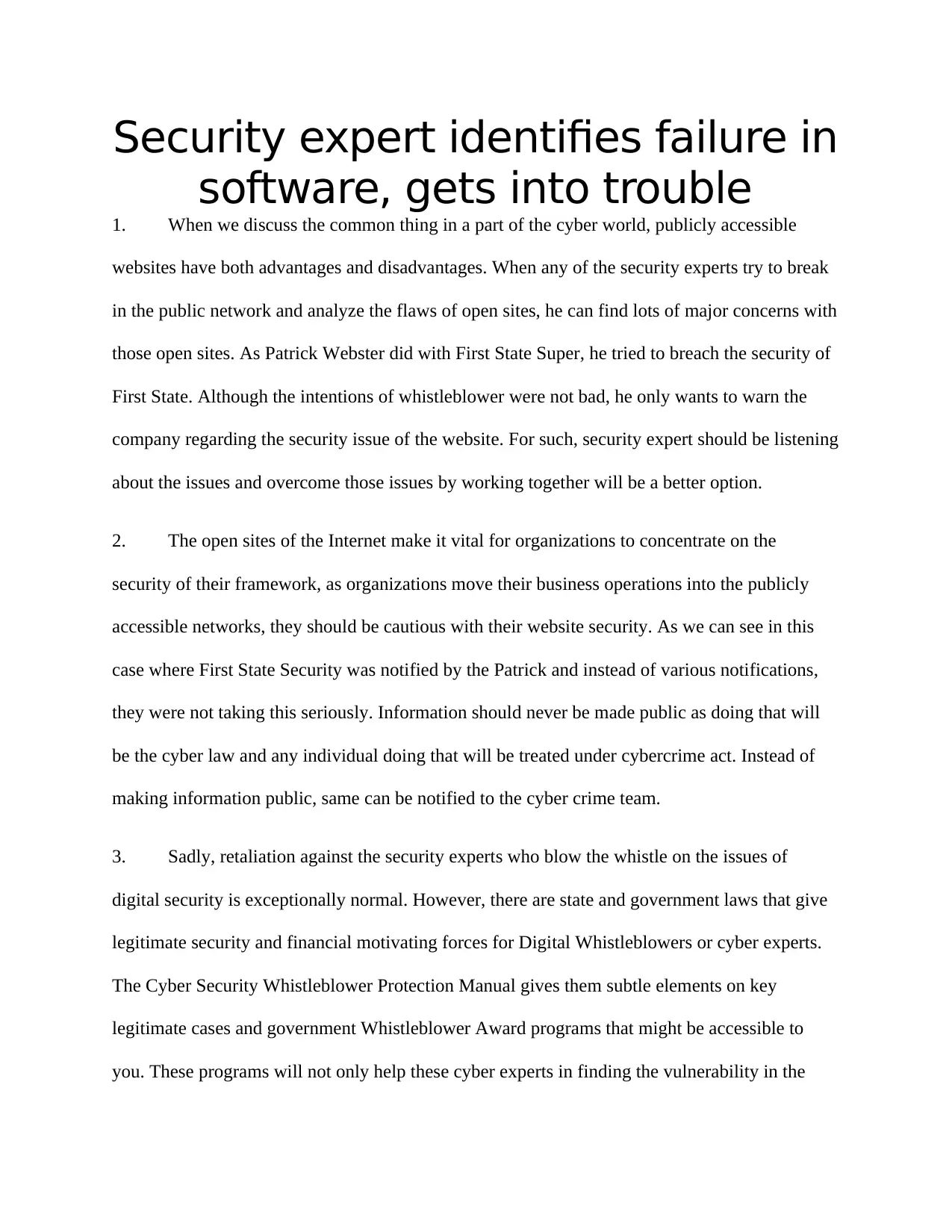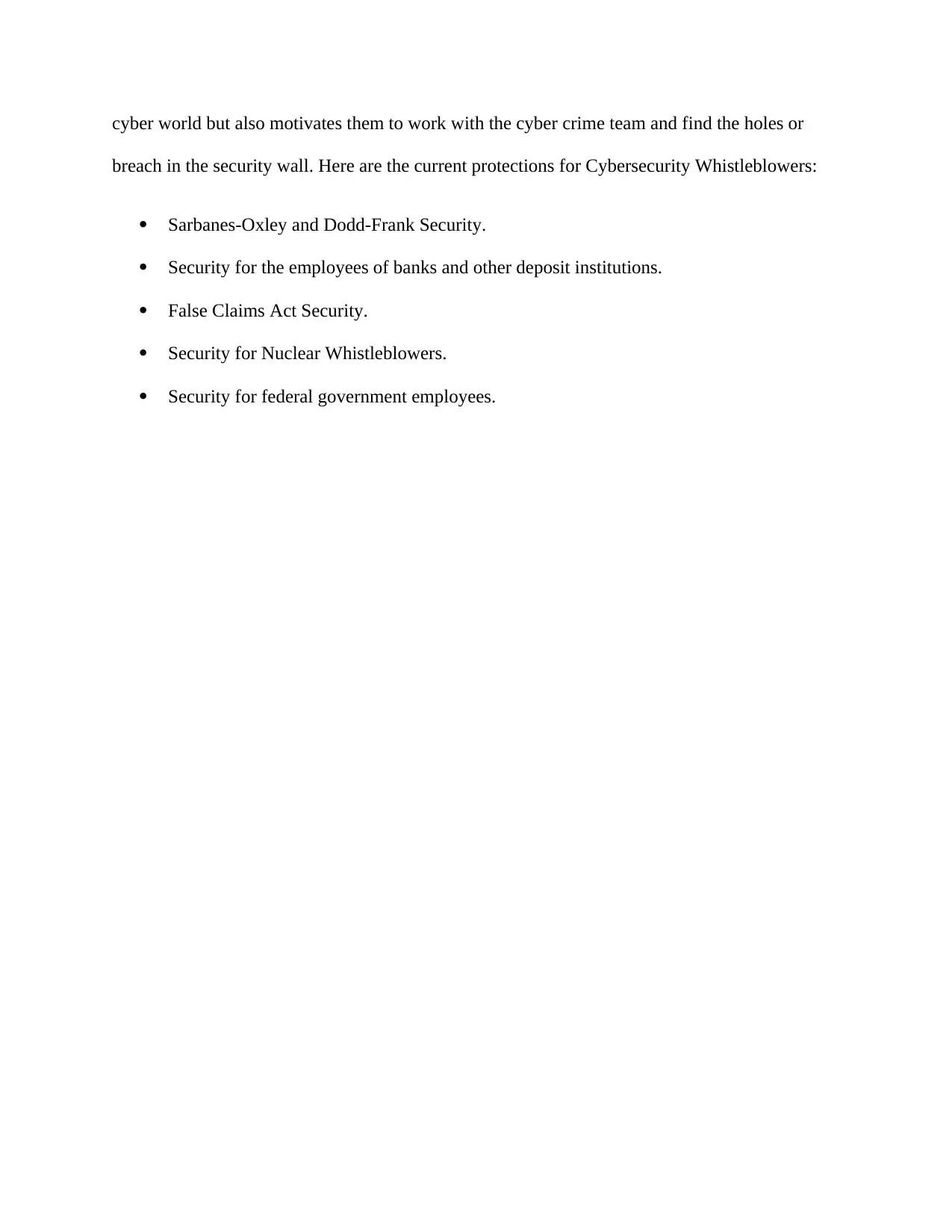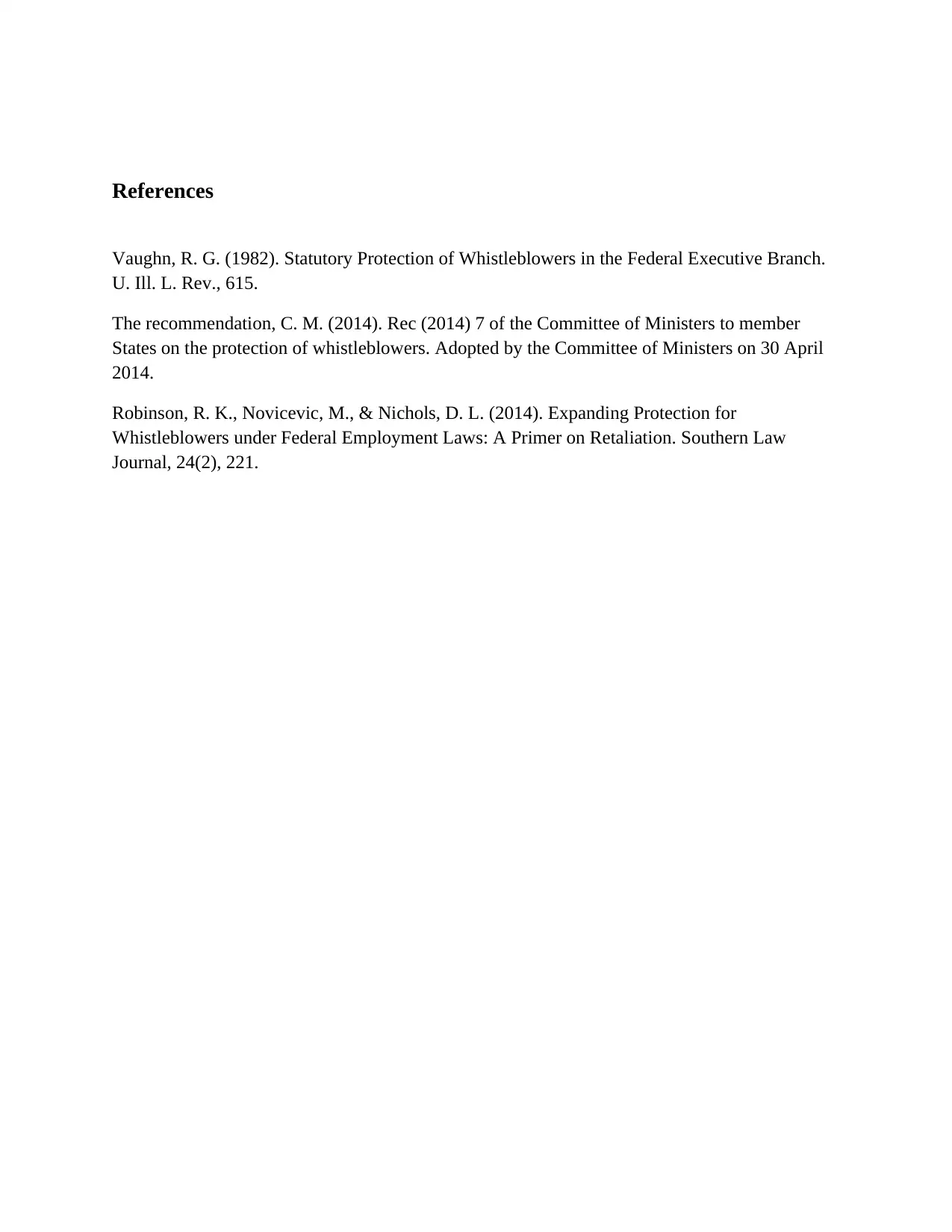Cybersecurity Report: Analysis of Whistleblower Case Study
VerifiedAdded on 2019/09/16
|3
|510
|358
Report
AI Summary
This report analyzes a cybersecurity case involving a whistleblower who identified a security flaw. It explores the ethical and legal implications of such actions, particularly focusing on the balance between identifying vulnerabilities and the potential consequences for those who report them. The report discusses the importance of secure systems, the role of whistleblowers, and the legal protections available to them. It also highlights the challenges faced by security experts and the need for organizations to address identified security issues promptly. The report emphasizes the importance of cybersecurity and the need for responsible disclosure of security vulnerabilities, along with the legal and ethical considerations involved in protecting sensitive data and systems. The report also discusses how the cyber security team should be notified about the breach instead of making it public and the importance of the protection for the cyber experts who are working with the cyber crime team.
1 out of 3






![[object Object]](/_next/static/media/star-bottom.7253800d.svg)